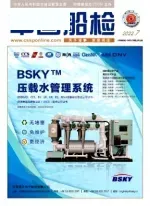Marine SCR:Opportunity or Challenge?
2011-08-29ByFanYunzhi
By Fan Yunzhi

On 15 July 2011, the 62 session of IMO Marine Environment Protection Committee (MEPC62)concluded in London. Apart from the approval of the well-known measures to reduce emissions of CO2from international shipping in the form of amendment to MARPOL Annex VI, the amendment to the NOx Technical Code and Guidelines for Selective Catalytic Reduction System (SCR), both of which is to make a far-reaching impact upon China’s diesel engine manufacturing and shipbuilding industries, were also adopted. With newly emerging areas being designated as ECA, more and more ships need to be fitted with the diesel engines satisfying the requirements of Tier III, but currently SCR system is the only mature product that can meet the requirement. Under the circumstances,what impacts will the adoption of SCR Guidelines have upon China’s relevant industries?
Many manufacturers, shipowners, and research institutes abroad started to conduct the research and development of SCR in the late 1980s. The system with over ten years of application on the real ship has realized fully automated monitoring and management. According to the latest report,NYK based in Japan has successfully completed the first sea trial of SCR system fi tted on large lowspeed diesel engine, which was installed on a 92,300DWT bulk carrier. MAN Diesel, the world’s leading provider of diesel engines, has also installed SCR system for the fi rst time on its large low-speed diesel engine (7000KW).
In contrast, there is a lack of marine SCR products in domestic manufacturing sector, and we still have a long way to go to realize maturity and industrialization of SCR products. Despite that there is some time left for implementation of the Tier III standard, facing the huge challenge, Chinese manufacturing industry, especially the diesel engine manufacturer, needs to launch research and development work as early as possible, or at least consider cooperating with foreign SCR manufacturers.They need to apply for relevant national green projects,seek fi nancial and policy support, and turn challenges into opportunities. Otherwise, they might fail to meet the Tier III standard and even lose the whole international shipping market.
On the MEPC62, Ireland and the USA also proposed to further amend the NOx Code against the diesel engine equipped with SCR system. They suggested that survey requirements be added for periodical surveys after the initial survey to ensure the ship’s continued compliance with the Tier III standard while navigating in the ECA.After discussion, the MEPC62 decided to task the BLG sub-committee with the assessment of the availability,economic efficiency and reliability of the continuous monitoring equipment for NOx emission. I personally deem that it is an opportunity for Chinese manufacturing industry. If the continuous monitoring equipment meeting the requirements could be successfully developed in the process of SCR system research, we could not only break the Western monopoly on the technology to win bene fits for Chinese shipping industry, but also open up broad market prospects.
Finally, it’s worth noting that there is some difficulty in meeting the Tier III standard. Thus, I suggest that domestic diesel engine manufacturers should actively participate in the work conducted by the expert team. On the one hand, they can learn about the latest research orientation, feasible technology and R&D progress of the leading diesel engine manufacturers abroad, and thus shorten their technological gap. On the other hand,they can study the feasibility of exempting from the Tier III emission standards for certain types of marine diesel engines designed and produced by ourselves based on practical situations, such as lack of practical and feasible technology to meet the Tier III emission standard, or limitation in ship type, size and layout. Moreover, they can even seek financial and technical support from IMO. In a word, we should avoid remaining in the passive situation of lagging behind.
